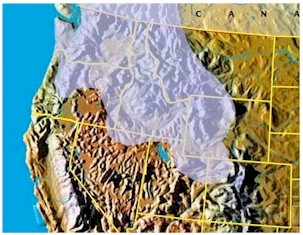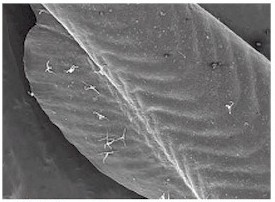 One of only two salmonids native to Colorado, the mountain whitefish was historically found in just the Yampa and White River drainages in the northwestern part of the state. Alarming declines in the Yampa River in the late 1990s spurred interest in this relatively unstudied species. Similar declines were documented in almost every other state across the native range during the same time period, while other populations in neighboring drainages often remained robust.
One of only two salmonids native to Colorado, the mountain whitefish was historically found in just the Yampa and White River drainages in the northwestern part of the state. Alarming declines in the Yampa River in the late 1990s spurred interest in this relatively unstudied species. Similar declines were documented in almost every other state across the native range during the same time period, while other populations in neighboring drainages often remained robust.Mountain Whitefish work group
A working group was established in January 2009, out of a gathering held in Silverthorne, Colorado to review what little we know about mountain whitefish and to direct future research efforts. To be included in this group and receive subsequent mailings, please contact kevin.rogers@state.co.us.
Documents of interest to group members include:
Mountain Whitefish Research
 Monitoring mountain whitefish populations
Monitoring mountain whitefish populations
Biologists are using electrofishing and mark-recapture methods to evaluate mountain whitefish population size in Colorado drainages where fish are native (Yampa and White Rivers), as well as where these fish were relocated in the 1940s (Cache la Poudre and Colorado Rivers). Population monitoring is essential for evaluating the health of these fisheries.
Whirling disease and Mountain Whitefish
 Though numerous studies have explored the sensitivity of various trout subspecies to whirling disease, little has been done with mountain whitefish despite being one of only two salmonids native to Colorado. Recent declines in mountain whitefish populations in the Yampa River have been blamed on predation by northern pike and drought-induced low river flows, particularly in the summer of 2002. However, whirling disease also invaded this drainage in the late 1990s. This study was conducted to examine the role whirling disease might have played in the decline of Yampa River mountain whitefish populations.
Though numerous studies have explored the sensitivity of various trout subspecies to whirling disease, little has been done with mountain whitefish despite being one of only two salmonids native to Colorado. Recent declines in mountain whitefish populations in the Yampa River have been blamed on predation by northern pike and drought-induced low river flows, particularly in the summer of 2002. However, whirling disease also invaded this drainage in the late 1990s. This study was conducted to examine the role whirling disease might have played in the decline of Yampa River mountain whitefish populations.
Vulnerability to whirling disease is being explored by raising captive mountain whitefish fry, exposing them to known quantities of the parasite, then evaluating survival and subsequent infection. This research is ongoing.
Water quality
 The coincident decline of mountain whitefish populations during the drought experienced in the early part of this decade led biologists to believe that elevated water temperatures might have been at least partially responsible. Thermal tolerances of mountain whitefish fry are currently being studied at the Aquatic Toxicology Laboratory in Fort Collins.
The coincident decline of mountain whitefish populations during the drought experienced in the early part of this decade led biologists to believe that elevated water temperatures might have been at least partially responsible. Thermal tolerances of mountain whitefish fry are currently being studied at the Aquatic Toxicology Laboratory in Fort Collins.
In addition, sensitivity to several metals was evaluated in mountain whitefish embryo, larvae and fry. Acute and chronic toxicity tests results indicate that mountain whitefish are similar to other salmonids in their sensitivity to cadmium and zinc. However, whitefish were very sensitive to copper exposure. Additional details on toxicity test results can be found in the Water Pollution Studies Federal Aid Report (pages 10-22).

